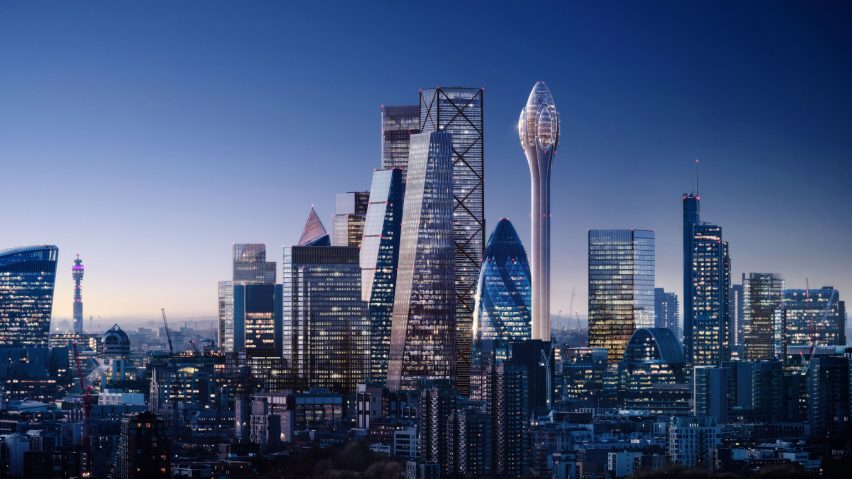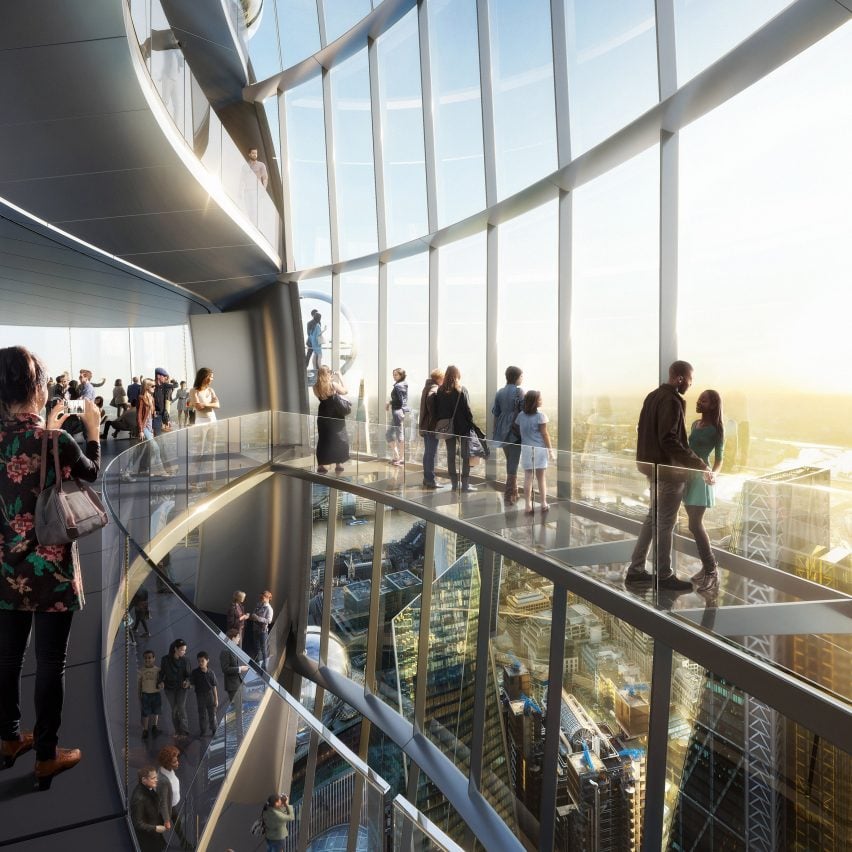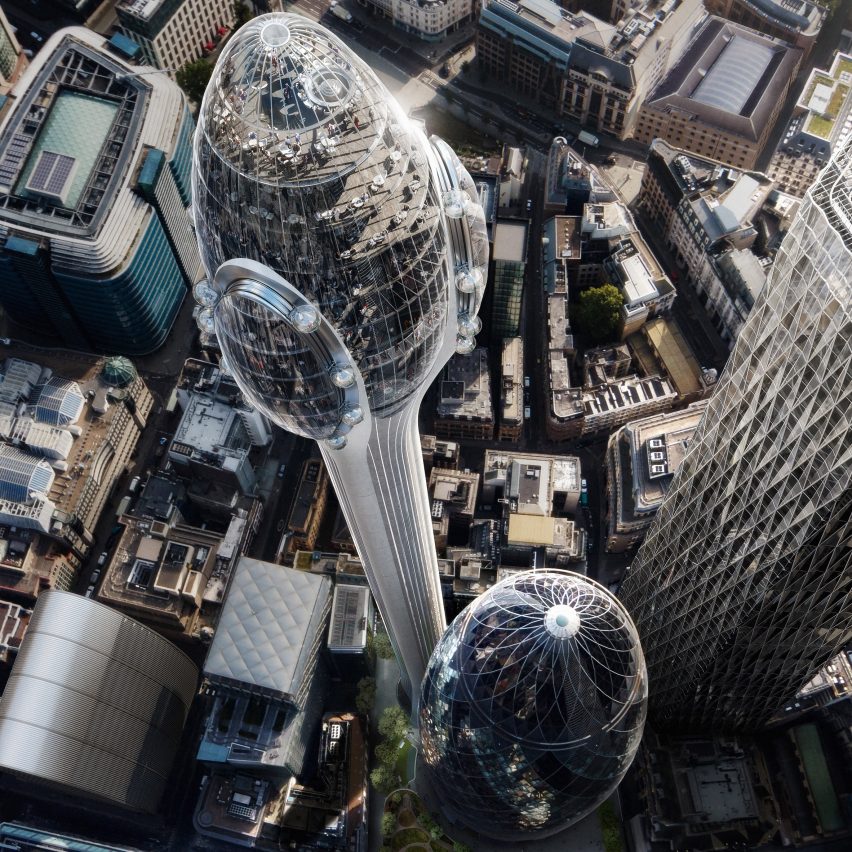
Government rejects Foster + Partners' "highly unsustainable" Tulip tower
Development of the proposed Tulip tourist attraction designed by Foster + Partners has been rejected by the UK government over concerns about embodied carbon and the quality of its design.
A decision letter published today on behalf of UK housing secretary Michael Gove dismissed a planning appeal for the 305-metre tower that was proposed for the City of London calling it a "muddle of architectural ideas".
The minister concluded that the economic, tourism and educational benefits of the Tulip, which was designed by London studio Foster + Partners, were outweighed by the harm it would cause "to the significance of designated heritage assets".

He argued the Tulip would "seriously detract" from the value of the nearby Tower of London, partly because the Tulip would rise up into the sky directly behind the historic fortress when viewed from Tower Bridge.
Gove felt that the Tulip's design of the bud-shaped tower carried "significant weight" against it.
"The development would not amount to a design of outstanding quality, and that the quality of design would not be nearly high enough as to negate its harm to the settings of heritage assets," the letter said.
"There is little evidence of how internal design reviews had shaped the outcome, that there was no independent review until after the application was reported to committee, and there is no information on the way heritage concerns played a part in choosing the location, materials, height, or shape and form of the Tulip."
Government criticises "highly unsustainable concept"
In addition, the housing secretary took aim at the environmental credentials of the building, which was slated for a site next to Foster + Partners' Stirling Prize-winning Gherkin skyscraper.
"The extensive measures that would be taken to minimise carbon emissions during construction would not outweigh the highly unsustainable concept of using vast quantities of reinforced concrete for the foundations and lift shaft to transport visitors to as high a level as possible to enjoy a view," the decision letter said.
It is believed to be the first time the government has cited embodied carbon in a planning decision letter – a major talking point at the COP26 climate conference today as it focused on the built environment.
Speaking at the summit last week, Foster + Partners founder Norman Foster called for "higher standards" on embodied carbon in buildings.

The government's decision may surprise some, after the Daily Telegraph was briefed last month that it was poised to give the Tulip the green light.
Mayor of London Sadiq Khan overruled the City of London Corporation to reject the proposal in 2019, with the government calling in the final decision following an appeal by the developer.
After holding a six-month public inquiry a planning inspector had recommended that the government throw out the appeal.
Bury Street Properties (Luxembourg) SARL, the company which submitted the planning application for the Tulip on behalf of Brazilian billionaire Jacob Safra, has the right to apply to the High Court to challenge the government's decision.
"London has missed a great opportunity"
"We are obviously disappointed with the outcome of the planning appeal," a spokesperson for Foster + Partners told Dezeen.
"As an unparalleled new attraction, the Tulip was envisaged as a unique cultural and educational facility that would have been a powerful magnet for investment and visitors in the heart of the City of London.
"We feel that London has missed a great opportunity to embrace a progressive vision for the future of the City."
Following the tower's initial approve in April 2019 Foster said the structure was inevitably "controversial".
"Like the Gherkin nearly twenty years ago, it is inevitably controversial, like the Gherkin it has the possibility of being a symbol beyond its host city," he said.
The renders are by DBOX for Foster + Partners.